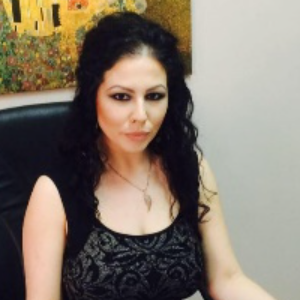Abstract:
The phacomatoses are congenital disorders associated with defect of tumor suppressing gene, affecting tissues of ectodermal origin as, nervous system, the skin, the retina, visceral organs. In classical group of phacomatoses 4 diseases are included: Von Recklinghausen neurofibromatosis (type 1and 2), Tuberous sclerosis, Von Hippel- Lindau disease (retinocerebellar angiomatosis) and encephalotrigeminal angiomatosis ( Sturge- Weber syndrome). Many other heredity diseases are classified under phacomatoses.
The accent of this lecture will be on tuberous sclerosis with clinical and radiological findings and analysis of several cases. Other 3 diseases will be commented with their basic characteristics just to show easy distinction between them and how easy to remember.Neurofibromatosis type 1 (NF 1) is one of the most common autosomal dominant disorders of CNS(17 chr). Phenotypic expression of the disease is extremely variable clinically and radiologically. Most frequent are cutaneous (café au lait spots), first manifestation during first year of life. Axillary freckling 85%, cutaneous neurofibromatosis and Lisch nodules in 95% at 30 years of age.
Mental retardation in 5%, optical pathway gliomas 15%, learning disabilities 50%.Most common neurophysiological manifestation of N F1 in childhood is a specific learning disability, defined as a major discrepancy between ability and achievement in patients with IQ scores in the normal range.
NF 2 is autosomal dominant (22 chr) much less frequent than NF 1. In nearly all patients it is present bill. vestibular schwannomas in age of 30. Meningiomas causing seizures and other schwannomas may be present also. Cutaneous manifestations are much less frequent than in NF 1. Hearing loss is present over 30 years, is an uncommon in childhood. Juvenile lens opacity (cortical cataract) is also one of the criteria for diagnosis of NF 2. If a meningioma or schwannoma is seen in a young patient, a contrast – enhanced MR should be obtained to look for asymptomatic tumors. In absence of cutaneous and ocular manifestation, patient with NF 2 may not develop any clinical manifestation until second, third or fourth decade of life. It will be upon the radiologist to make the diagnosis of NF 2.Tuberous sclerosis is an autosomal dominant disease with two separate mutated genes identified, that involves multiple organs. These genes are responsible for synthesis of proteins that are involved in the regulation of cell proliferation and differentiation.
Classically, TS has been characterized by the clinical triad of mental retardation (45-82%), epilepsy (80%) and characteristic skin lesions (adenoma sebaceous-nodular rush of brownish red color over the nasolabial folds of face). Now are suggested more sophisticated criteria for clinical diagnosis. Retinal hamartomas are common. Intracranial abnormalities of TS are result of dysplastic, disorganized cells in the subependymal region, the cortex and pathways between them.Several cases of TS will be analyzed with their intracranial manifestation and MR characteristics.
The aim of this presentation is to simplify clinical and radiological findings in this group of Phacomatoses for easy remembering the clinical signs and radiological appearances in order to make correct diagnosis.
If we simplify the signs of the diseases and make them closer to the listeners, it would be easier for them in the future to remember this diseases, which are relatively rare in the practice, but very important to diagnose correct for the patients, their parents, the society and for the treatment.
If the radiologist knows where and what to look for, it will help them in their daily practice to simplify the diagnostic procedures and make correct on time diagnosis.




